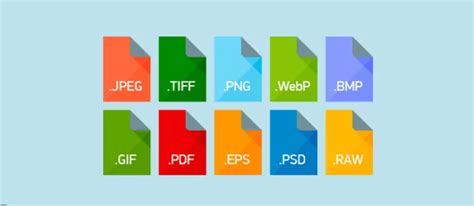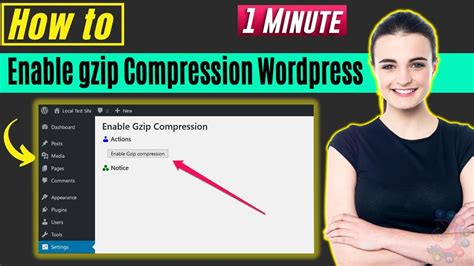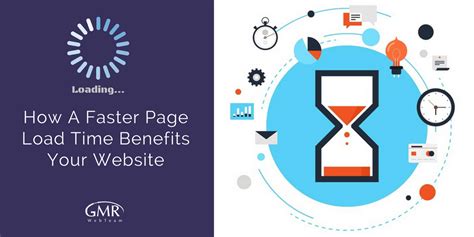In the ever-evolving digital landscape, where online presence has become paramount for businesses and individuals alike, website loading speed can make or break user engagement. To ensure your website achieves optimal performance, it is crucial to focus on strategies that streamline loading times and deliver a seamless browsing experience.
Aiming to equip webmasters and developers with the necessary know-how, this comprehensive guide presents the top 10 tips for accelerating website loading speed. By implementing these tried-and-tested techniques, you can enhance user satisfaction, reduce bounce rates, and ultimately boost conversions.
Discover the power of website optimization as we delve into various aspects, ranging from refining code and optimizing images to leveraging caching mechanisms and content delivery networks. Through a combination of practical insights and industry best practices, you will gain a deep understanding of the factors that influence loading speed, along with actionable strategies for improvement.
Emphasizing the importance of a fast-loading website, this guide highlights the correlation between loading speed and key metrics, such as user experience, search engine rankings, and overall business success. By learning how to minimize page load time, you can effectively cater to the needs of today's impatient online audience and gain a competitive edge in the digital realm.
So, whether you are a seasoned web developer seeking optimization tips or a website owner looking to improve user satisfaction, this guide will equip you with the essential techniques to enhance your website's loading speed. Let's dive into the world of performance optimization and unlock the potential for unparalleled digital success.
Optimizing Image Size and Format

In today's fast-paced digital world, where attention spans are short and competition is fierce, it is crucial to ensure that your website loads quickly and delivers an outstanding user experience. One of the key factors influencing website loading speed is the size and format of the images used.
When it comes to optimizing image size and format, there are several strategies you can employ. First and foremost, it is essential to choose the right image format. Different formats, such as JPEG, PNG, and GIF, have different characteristics and are suitable for different types of images.
JPEG is a popular format for photographs and complex images that contain many colors. It offers a high level of compression, resulting in smaller file sizes, but at the cost of some loss in image quality. However, the loss is often negligible and not noticeable to the human eye.
PNG format, on the other hand, is ideal for images that require transparency or need to maintain a high level of detail. It supports lossless compression, meaning it retains the original image quality without sacrificing file size. However, PNG files tend to be larger compared to JPEG files.
GIF format is commonly used for animations and simple graphics with limited colors. It supports transparency and offers lossless compression, but it is not suitable for detailed images or photographs.
Once you have chosen the appropriate image format, the next step is to optimize the size of the image. This can be done by resizing the image to the exact dimensions required by your website, ensuring that it neither appears too small nor stretches to fit the layout. Additionally, you can compress the image further by reducing its quality slightly, while still maintaining a visually appealing result.
Another important aspect to consider is the use of responsive images. With the increasing use of mobile devices, it is crucial to provide images that adapt to different screen sizes. By using responsive image techniques, such as using the srcset attribute or the picture element, you can deliver the appropriate image size based on the device's capabilities.
In conclusion, optimizing image size and format is a vital step in boosting your website's loading speed. By carefully selecting the appropriate format, resizing images, compressing them efficiently, and implementing responsive image techniques, you can significantly enhance the performance of your website and provide a seamless user experience.
Minimize Size of CSS and JavaScript Files
One effective technique to improve the performance of your website is to minimize the size of CSS and JavaScript files. By reducing the file size, you can significantly reduce the loading time, enhance user experience, and improve your website's overall speed.
When we talk about minimizing CSS and JavaScript files, we mean making them smaller without affecting their functionality. This can be achieved through a process called minification, which involves eliminating unnecessary characters, spaces, and comments from the code.
Minifying CSS and JavaScript files not only reduces their size but also simplifies the code structure, making it more streamlined and efficient. This streamlining process involves removing unnecessary white spaces, line breaks, and indentation, as well as combining CSS or JavaScript files into a single file to reduce HTTP requests.
By minifying your CSS and JavaScript files, you can improve the loading speed of your website, as the smaller file size results in faster transmission and processing by the user's browser. Additionally, minification also helps in reducing bandwidth usage and optimizing the overall performance of your website.
To achieve minification, you can use various tools available on the internet that automatically remove unnecessary characters and compress the files. These tools often have options to customize the level of minification based on your preferences and requirements.
It's important to note that after minifying your CSS and JavaScript files, you should always test your website to ensure that everything is functioning properly. Occasionally, the minification process may remove essential code or introduce errors, which can affect the functionality of your website.
In conclusion, minifying your CSS and JavaScript files is a crucial step in optimizing your website's loading speed. By reducing the file size through minification, you can enhance user experience, improve website performance, and ultimately provide a faster and more efficient browsing experience for your visitors.
Implementing Effective Caching Techniques

In this section, we will explore the strategies and methods for enhancing the performance and speed of your website by implementing caching techniques.
1. Leverage Browser Caching: By enabling browser caching, you can instruct the user's browser to store certain resources locally, reducing the need to re-download them for subsequent visits.
2. Utilize Content Delivery Networks (CDNs): CDNs distribute your website's static content across multiple servers worldwide, ensuring faster delivery to users by minimizing the distance the data needs to travel.
3. Enable Server-Side Caching: Implement server-side caching mechanisms, such as object caching or database query caching, to store frequently accessed data and reduce database load.
4. Implement Page Caching: Generate static HTML files for dynamic website content using caching plugins or by utilizing server-level caching mechanisms, resulting in quicker page loads and reduced server resources usage.
5. Optimize Database Queries: Examine and optimize your database queries by reducing the number of unnecessary calls, optimizing query structure, and properly indexing your database tables.
6. Enable HTTP Caching Headers: Configure your web server to send proper caching headers, like "Expires," "Cache-Control," and "ETag," to inform the browser how long to cache the resources and when to check for updates.
7. Minify and Compress Resources: Minify your HTML, CSS, and JavaScript files by removing unnecessary characters, spaces, and line breaks to reduce file size. Additionally, enable compression techniques like GZIP to further decrease file size and decrease load times.
8. Implement Client-Side Caching: Leverage client-side caching mechanisms like LocalStorage or SessionStorage to store temporary data on the user's browser, reducing the need for repetitive data retrieval.
9. Use a Content Delivery Network (CDN) for Images: Offload your website's images to a CDN, allowing them to be delivered from locations closer to the user and enhancing the loading speed.
10. Regularly Monitor and Update Your Caching Strategy: Continuously monitor your website's caching performance and update your caching strategy as needed. Technology and web best practices evolve, so ensure your caching techniques stay up-to-date.
Reduce Redirects
Enhance your website's performance by minimizing the number of redirects it employs.
Redirects, which involuntarily direct visitors from one URL to another, can significantly impact website loading speed. By reducing the reliance on redirects, you can improve the overall user experience and maximize your website's efficiency.
Instead of utilizing multiple redirects to navigate users, strive to provide direct access to the desired content. This approach eliminates unnecessary network requests, resulting in faster loading times and reduced latency.
In addition, evaluating and optimizing the structure of your website's links can further enhance loading speed. By ensuring that URLs point directly to the intended destination rather than relying on redirects, you can streamline the browsing process for your audience.
By reducing redirects, you not only enhance the performance of your website but also contribute to improved search engine optimization (SEO). Search engines favor websites with fewer redirects, as they prioritize efficient browsing experiences for users.
Make reducing redirects a priority in your website optimization strategy, and watch as your loading speed and overall user satisfaction soar.
Enable Gzip Compression

In today's digitally-driven world, where online presence plays a vital role in achieving success, it is crucial for websites to provide a smooth and seamless user experience. One important aspect of optimizing website loading speed is enabling Gzip compression.
Imagine if every time you wanted to access a webpage, you had to wait for an extended period for it to load. It would undoubtedly be frustrating and discourage you from visiting the site again. This is where Gzip compression comes to the rescue.
Gzip compression is a method that reduces the size of files, such as HTML, CSS, and JavaScript, before they are sent from the website server to the user's browser. By compressing these files, Gzip significantly reduces the amount of data that needs to be transferred, resulting in faster loading times.
How does Gzip compression work?
When a user visits a website, their browser sends a request to the server for the website files. Before sending these files, the server compresses them using Gzip. This compression process removes redundant data, such as white spaces and unnecessary characters, resulting in a smaller file size.
Once the compressed files reach the user's browser, they are automatically decompressed, allowing the browser to read and display the website correctly. This seamless process greatly improves website loading speed, enhancing the overall user experience.
Why is enabling Gzip compression important?
Enabling Gzip compression provides multiple benefits for both the website owner and the user. Firstly, it reduces the amount of data that needs to be transferred, resulting in faster loading times. This is particularly crucial for users accessing the website on mobile devices with limited data plans or unstable internet connections.
Additionally, by reducing the file size, Gzip compression decreases the bandwidth usage of the website, which can lead to cost savings for website owners, especially if they are hosting their website on a server with limited bandwidth allocation.
In conclusion, enabling Gzip compression is a simple yet effective way to boost website loading speed and improve user experience. By compressing files and reducing data transfer, Gzip compression ensures that visitors can access a website quickly and without frustration, ultimately resulting in higher engagement and potential business growth.
Optimize your Website Loading Speed with a Content Delivery Network (CDN)
Increase the efficiency of your website's loading time by implementing a Content Delivery Network (CDN). A CDN is a globally distributed network of servers strategically positioned to provide faster and more reliable content delivery to users around the world.
By utilizing a CDN, you can significantly reduce latency and improve the overall user experience. Content is cached and stored on edge servers located closer to your website visitors, eliminating the need for data to travel long distances. This results in faster loading times, regardless of where your users are located geographically.
Furthermore, a CDN helps to distribute the load on your website's server, preventing it from becoming overwhelmed by high traffic volume. This ensures that your website remains accessible and responsive even during peak usage periods.
When choosing a CDN, consider factors such as geographical coverage, network reliability, and scalability. Look for a provider that offers a robust network infrastructure with multiple server locations worldwide. This will allow your website to deliver content quickly and consistently to a global audience.
Implementing a CDN may require some technical expertise, but it is well worth the effort. The improved loading speed and enhanced user experience will result in higher customer satisfaction, increased conversions, and better search engine rankings for your website.
Key benefits of using a CDN:
- Reduces latency and improves loading speed
- Distributes the load on your server
- Enhances user experience
- Increases customer satisfaction
- Improves search engine rankings
Consider implementing a Content Delivery Network to optimize your website's loading speed and provide a fast, seamless user experience for your visitors around the world.
Prioritizing Content Above the Fold for Faster Page Load Times

In today's fast-paced digital world, website loading speed is a crucial factor in providing a seamless user experience. Users expect websites to load quickly, and if they have to wait too long, they may lose interest and abandon the site altogether. One effective strategy to optimize website loading speed is to prioritize the loading of above-the-fold content.
Above-the-fold content refers to the portion of a webpage that is visible without scrolling. It is the first thing users see when they land on a website, and it plays a significant role in capturing their attention and engagement. By prioritizing the loading of above-the-fold content, you can ensure that users get immediate access to the most important information on your website, even if the rest of the page takes longer to load.
There are several techniques you can implement to prioritize above-the-fold content loading:
- Optimize the critical rendering path: The critical rendering path is the sequence of steps the browser takes to render the content of a webpage. By optimizing this path, you can ensure that above-the-fold content is prioritized and rendered quickly.
- Minimize render-blocking resources: Render-blocking resources, such as external stylesheets and JavaScript files, can delay the rendering of above-the-fold content. Minimizing these resources or loading them asynchronously can help improve page load times.
- Leverage browser caching: Caching allows browsers to store static files, such as CSS and JavaScript files, locally. By leveraging browser caching, you can reduce the number of requests made to the server, resulting in faster page load times.
- Optimize image loading: Images can significantly contribute to page load times. To optimize image loading, consider compressing images, using lazy loading techniques, and serving appropriately sized images based on the user's device.
- Use Content Delivery Networks (CDNs): CDNs store website files on servers located in various geographic locations. By using a CDN, you can deliver content to users from the server closest to their location, reducing latency and improving overall page load times.
- Eliminate unnecessary plugins and scripts: Plugins and scripts can add extra weight to your website, slowing down its performance. Review and remove any unnecessary plugins and scripts that are not essential for the above-the-fold content.
- Prioritize above-the-fold content in HTML structure: Structuring your HTML code in a way that places above-the-fold content first can help browsers identify and prioritize its loading.
- Lazy load below-the-fold content: Loading below-the-fold content only when the user scrolls to it can significantly improve initial page load times. Lazy loading below-the-fold content involves deferring the loading of non-essential resources until they are actually needed.
- Monitor and optimize third-party scripts: Third-party scripts, such as analytics or advertisements, can sometimes impact page load times. Regularly monitor and optimize these scripts to minimize their impact on above-the-fold content loading.
- Regularly test and optimize your website: Performance optimization is an ongoing process. Regularly test your website's loading speed using tools like Google PageSpeed Insights or GTmetrix, and make necessary optimizations to keep your above-the-fold content loading as fast as possible.
By implementing these strategies and optimizing the loading of above-the-fold content, you can significantly improve your website's loading speed and provide a better user experience for your visitors.
FAQ
What are some tips to boost website loading speed?
There are several tips to boost website loading speed. Some of them include optimizing images and videos, minifying CSS and JavaScript files, enabling browser caching, using a content delivery network (CDN), and reducing server response time.
How can I optimize images and videos to improve website loading speed?
To optimize images and videos, you can resize them to the correct dimensions and compress them without sacrificing too much quality. Additionally, you can use a lazy loading technique, which only loads images and videos when they are in the viewport. This can significantly improve website loading speed.
What is browser caching and how does it help in boosting website loading speed?
Browser caching is a technique where static files, such as CSS, JavaScript, and images, are stored on the user's device after the first visit to a website. When the user revisits the website, the browser can fetch these files from the local storage instead of downloading them again from the server. This reduces the load time and improves website loading speed.



